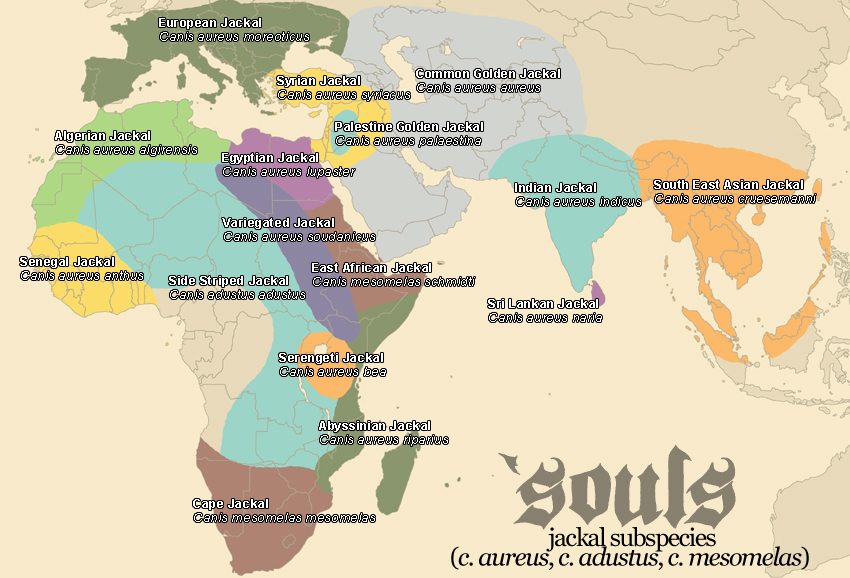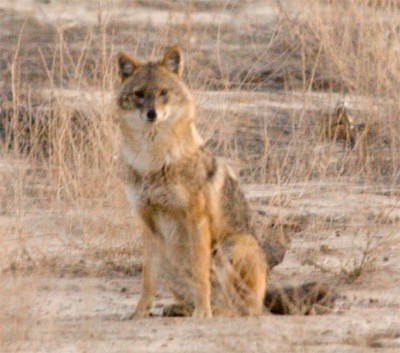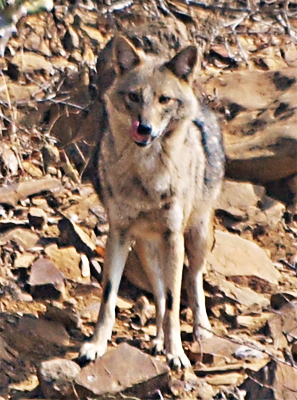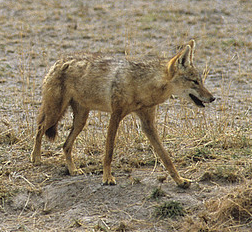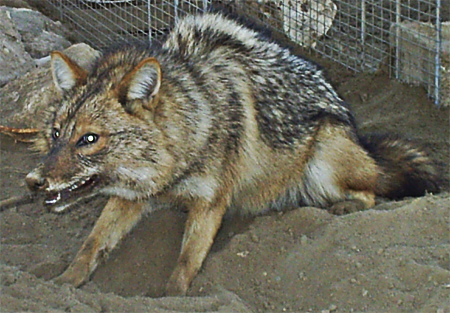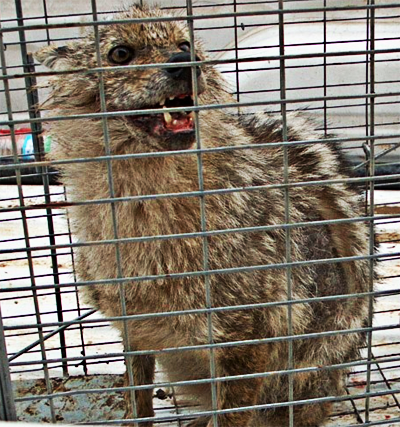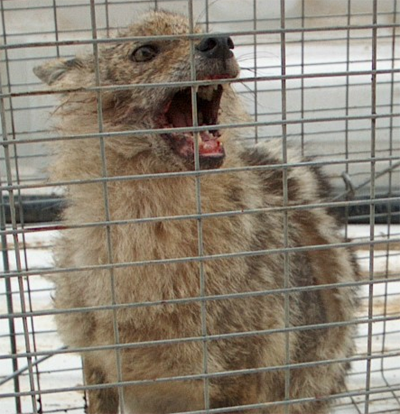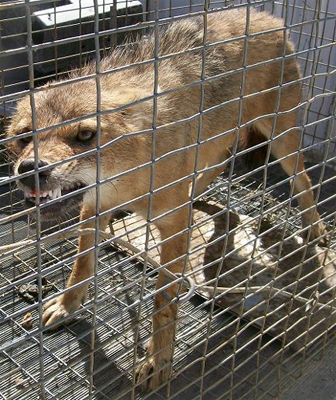Golden Jackal (''Canis aureus aureus'')
See our RP Guide for more extensive information regarding jackals.
On this page... (hide)
- 1. Common Names
- 2. 'Souls Range
- 3. Appearance
- 4. More Images
- 4.1 Citations
1. Common Names
Common Jackal, Asiatic Jackal, Persian Jackal, Turkestan Jackal
2. 'Souls Range
Middle Asia, Afghanistan, Iran, Iraq, Arabian Peninsula, Baluchistan, northwestern India.
3. Appearance
The Golden Jackal is considered the most typical representative of the Canis genus. They are medium-sized, from 29 - 42 inches (74 - 105 cm) long, 15 - 20 inches (30 - 50 cm) high at the shoulder, and weigh between 15 - 33 pounds (7 - 15 kg). Jackals can be compared to small, desert subspecies of coyotes in terms of size and general shape. Their muzzles are far more slender than the Grey Wolf's, though not as tapered as the coyote's. Golden Jackals have long legs and slight, lean bodies.
They are generally golden in coloration, though some jackals that inhabit mountainous territory have grey pelts. Some also have a darker back, although this is generally not nearly as pronounced as the one found on its smaller cousin species, the Black-Backed Jackal. Their undersides are lighter in most individuals. Some jackals have been reported to have black or piebald coats, though this is a rare phenomenon. As compared to Indian Jackals, Golden Jackals have far duller, less richly colored coats.
Canis aureus aureus, from trblmkr@Flickr
3.1 Other Characteristics
Golden Jackals (and all subspecies, of course) are more closely related to the Gray Wolf and the Coyote than other Jackal subspecies. Golden Jackals more easily hybridize with wolves, dogs, and other members of the Canis genus than either the Black-Backed or Side-Striped Jackal as they also have 78 chromosomes like the Gray Wolf and Coyote.
Social Behavior
Jackals are less social than the Gray Wolf -- they typically roam in monogamous male and female pairs throughout a territory region, sometimes with younger individuals from the previous season's breeding. These helpers remain to assist the alpha pair in rearing their new children; studies conducted on these animals have concluded that helping actually increases the helper's ability to rear his or her own children eventually. By watching their parents rear children, they themselves learn how to better parent.3
Habitat
Jackals are not typically found at very high elevations; most seem to prefer lowlands. They are, however, a highly adaptable species: in North Africa, they live on open plains. Although they are the most desert-capable Jackal, they are not found in the deeper reaches of deserts. They are not particularly adapted to cold weather: they cannot traverse through very heavy snowfall without keeping to a path made by another animal first. Cold temperatures are also a problem, but they are capable of surviving them up to -25° or even -35°.
Diet
Common Golden Jackals are typically more carnivorous when compared to subspecies found further east on the Asian continent, though they are omnivorous and capable of eating fruit. Scavenging is not as major a part of the Common Golden Jackal's diet as its African counterparts; this subspecies is more likely to hunt prey than scavenge it.
Survival
Common Golden Jackals experience some fierce competition -- wolves and jackals are often at odds for the same types of prey, and they compete intensely with one another where their ranges intersect. Golden Jackals tend to dominate the Black-Backed and Side-Striped Jackals in competition, though the former is much more aggressive. Following the extinction of humanity, however, civilization expanded over from Europe, and these canines benefited immensely from the acquisition of the Luperci virus: Jerusalem was captured in war against wolves by Common Golden Jackals, and their larger cousin species was subsequently driven out.
However, not all interaction has been bad -- prior to the new bad blood, these jackals were responsible for exposing the Steppe Wolf to a nomadic way of life, inadvertently creating the premier merchant subspecies of the new Luperci-inundated wolf. Of course, this benefited the jackals -- for a while, anyway.
4. More Images
4.1 Citations

